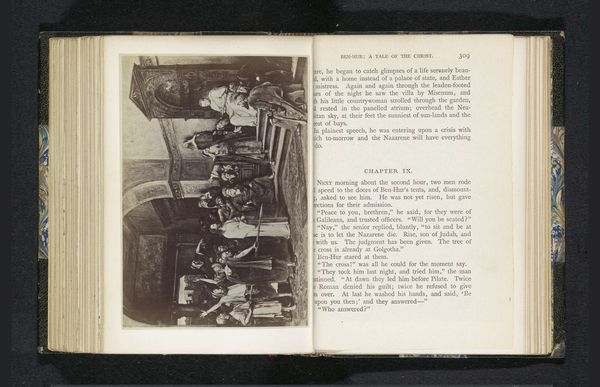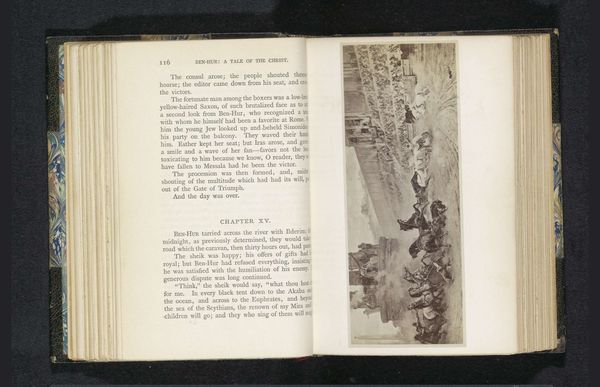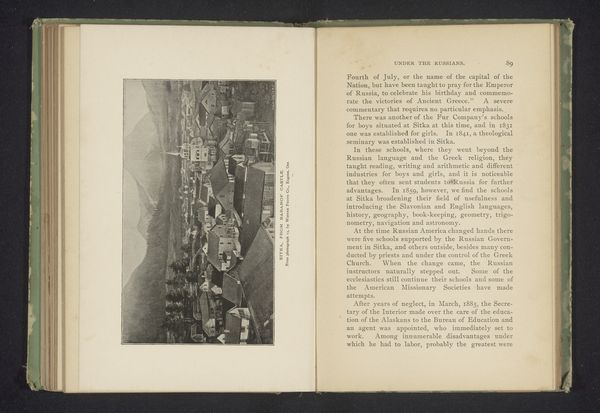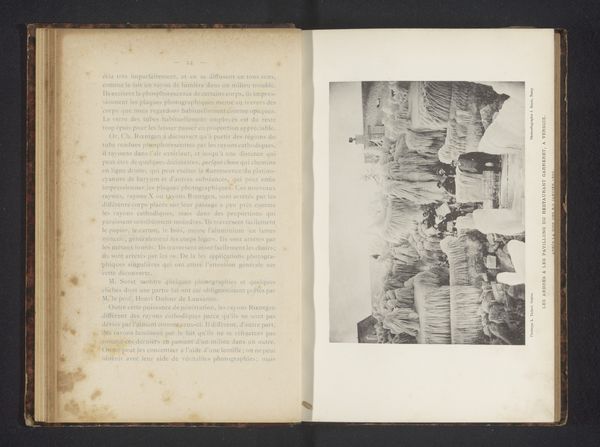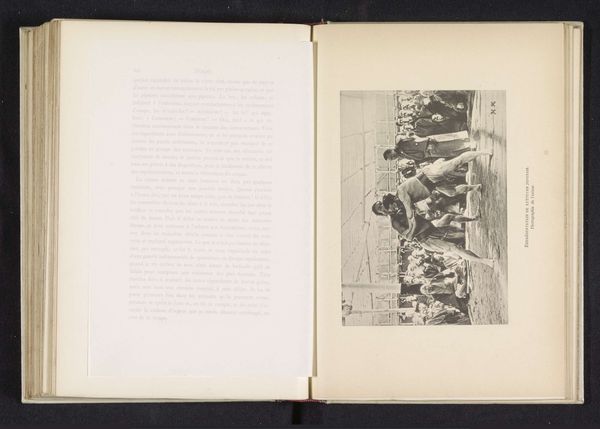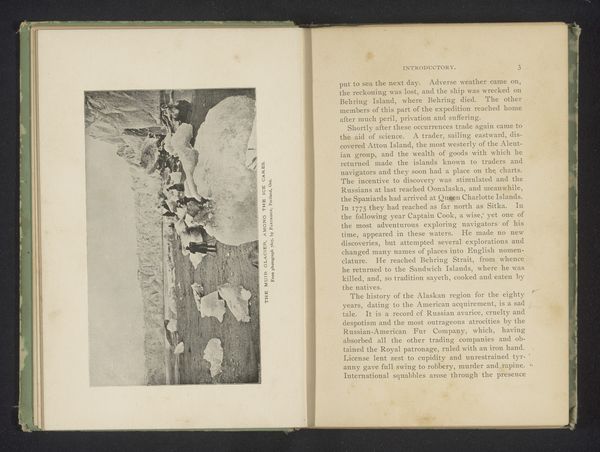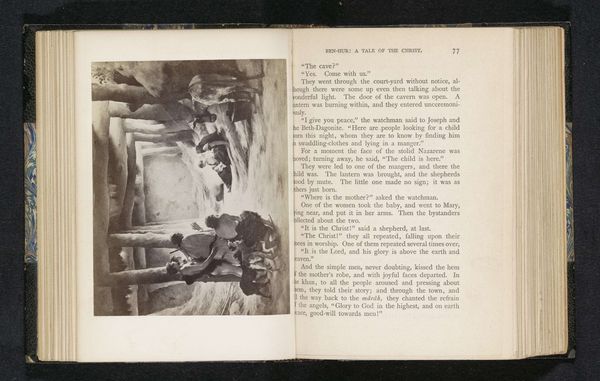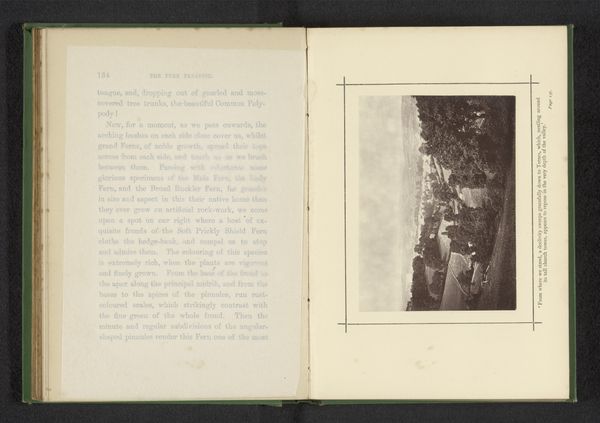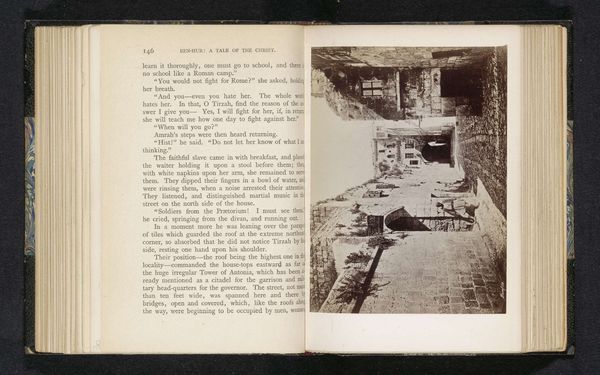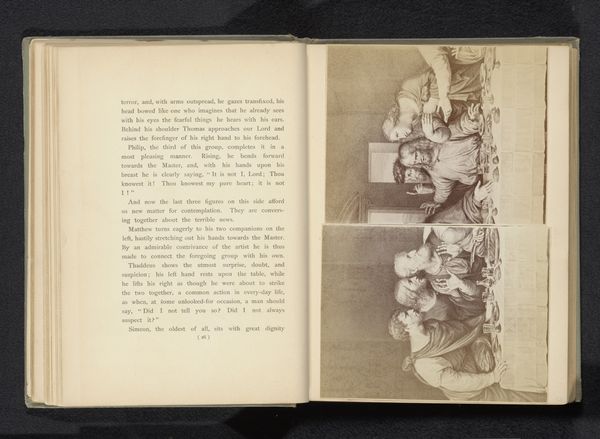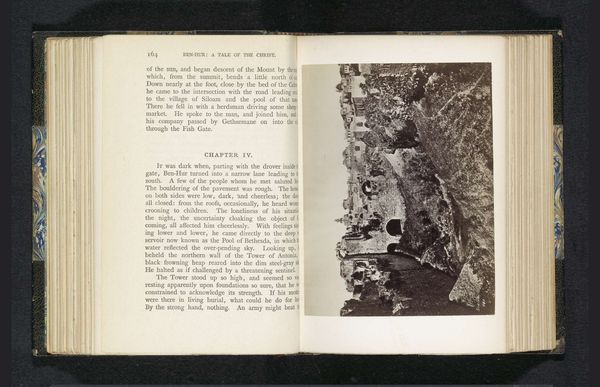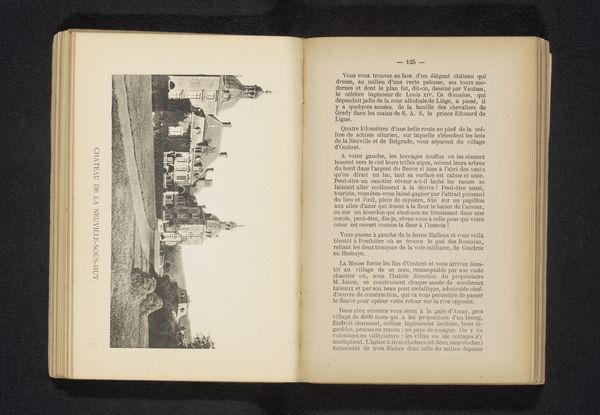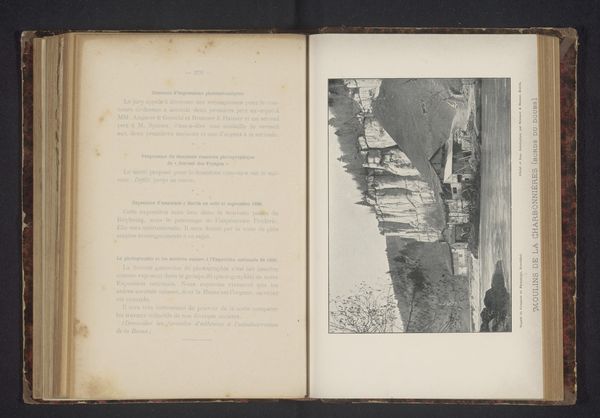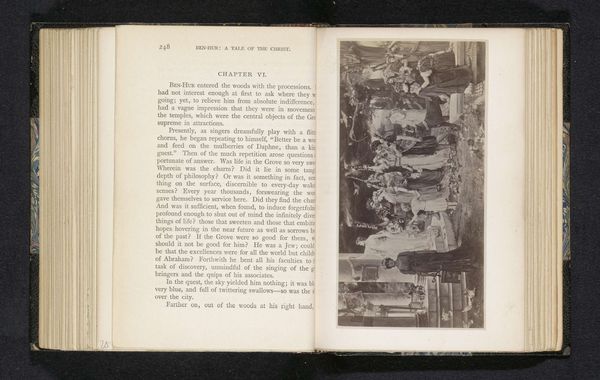
Fotoreproductie van een schilderij, voorstellende een menigte rond de Meta Sudans te Rome before 1888
0:00
0:00
print, photography, gelatin-silver-print
#
portrait
#
aged paper
#
homemade paper
#
paper non-digital material
#
narrative-art
#
paperlike
# print
#
sketch book
#
photography
#
personal sketchbook
#
journal
#
ancient-mediterranean
#
gelatin-silver-print
#
history-painting
#
sketchbook art
#
historical font
#
columned text
Dimensions: height 102 mm, width 134 mm
Copyright: Rijks Museum: Open Domain
Curator: Here we have what's called "Fotoreproductie van een schilderij, voorstellende een menigte rond de Meta Sudans te Rome," a photographic reproduction of a painting showing a crowd around the Meta Sudans in Rome, before 1888, by Étienne Neurdein. It's a gelatin silver print, likely bound within a larger volume. Editor: The image has such an antique aura, like a lost memory recovered from an old family album. The composition seems crowded yet organized. Curator: It's fascinating how Neurdein employs photography to capture another medium, a painting, reproducing a scene steeped in historical context. The Meta Sudans, a monumental fountain, becomes a focal point, around which a bustling crowd is arranged. The textures, the aging of the print itself – all contribute to its narrative. Editor: Agreed, the textures do speak volumes. I’m particularly struck by how the photograph itself seems to mimic the effects of an aged painting, perhaps intentionally. The contrast is also quite pronounced, giving it a very graphic quality. But who were the intended viewers of this photograph and the painting upon which it's based? How were images like this disseminated? Curator: Given that this image is within a bound book, its intended viewers were likely educated, affluent individuals interested in history or perhaps planning a trip to Rome. Photography was a method to circulate knowledge, reinforcing social structures of power through image possession and travel preparation. Editor: Interesting to consider this image as part of a circulation network, shaping perceptions and understandings of Rome for the European tourist, particularly those wishing to explore its ancient past. The layering of image upon image – the photo of a painting – makes it so intriguing. I appreciate how this work allows us to look through the lenses of art history. Curator: And to recognize how technologies of reproduction continually transform our access to and understanding of the past.
Comments
No comments
Be the first to comment and join the conversation on the ultimate creative platform.
